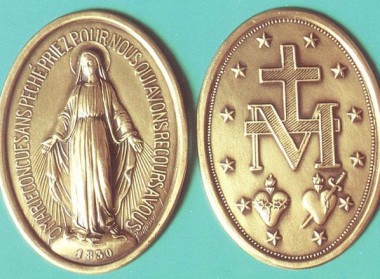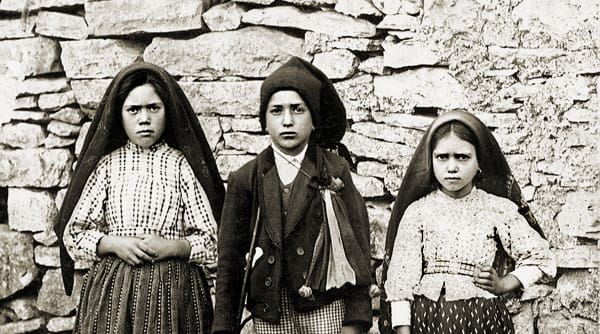My question is about claims of locutions and messages on various websites. It seems to me they’re threatening readers that, unless Pope Francis proclaims “the 5th Marian Dogma” very soon, the world faces social destruction and nuclear war. I feel fearfully pressured to spend all my time in prayer as the time draws near. I’ve spoken to other priests and laity about this. I need your advice and help.
To give detailed answers on specific websites and individuals is beyond the scope of what can be discussed here in a limited space. Rather, this post will cover some general guidelines about private revelations and their role in the life of the Church, as well as their role in our own lives of spiritual growth. I hope these criteria will help you, and our other readers, navigate these waters. This explanation provides a basic orientation and is not meant to be exhaustive i.e. it does not cover everything about each particular private revelation.
Starting with the Basics
Let’s start with what the Catechism says about private revelations in paragraph #67:
Throughout the ages, there have been so-called “private” revelations, some of which have been recognized by the authority of the Church. They do not belong, however, to the deposit of faith. It is not their role to improve or complete Christ’s definitive Revelation, but to help live more fully by it in a certain period of history. Guided by the Magisterium of the Church, the sensus fidelium knows how to discern and welcome in these revelations whatever constitutes an authentic call of Christ or his saints to the Church.
Christian faith cannot accept “revelations” that claim to surpass or correct the Revelation of which Christ is the fulfillment, as is the case in certain non-Christian religions and also in certain recent sects which base themselves on such “revelations”.
From this basic guideline, we can draw a few principles to guide our interaction with private  revelations, which include locutions and visions and prophecies. The appearances of the Blessed Virgin Mary at Lourdes and Fatima, for example, would qualify as private revelations. “Private,” in this context, doesn’t mean reserved to just one or a few people, since these revelations are often meant to be communicated at large. Rather, the word private is a technical term used to contrast these revelations with the definitive public revelation of God’s saving plan through Christ himself, through the Sacred Scriptures, and through the Tradition of the Church. God has revealed himself and his plan of salvation already, through those public revelations. If you read paragraphs 65 and 66 of the Catechism, you will catch the distinction.
revelations, which include locutions and visions and prophecies. The appearances of the Blessed Virgin Mary at Lourdes and Fatima, for example, would qualify as private revelations. “Private,” in this context, doesn’t mean reserved to just one or a few people, since these revelations are often meant to be communicated at large. Rather, the word private is a technical term used to contrast these revelations with the definitive public revelation of God’s saving plan through Christ himself, through the Sacred Scriptures, and through the Tradition of the Church. God has revealed himself and his plan of salvation already, through those public revelations. If you read paragraphs 65 and 66 of the Catechism, you will catch the distinction.
Never Obligatory
The first thing to note about private revelations is that they “do not belong to the deposit of the faith.” This means that no Christian can ever be required by the Church to believe in them. This is an important distinction. The Church requires Christians to believe in doctrines like Christ’s incarnation and resurrection, like the inspiration of Scripture and the Last Judgment. These are part of public revelation. If we stubbornly refuse to believe in these doctrines, we are sinning against faith. But when it comes to private revelations, the case is quite different. They are extras, so to speak, that God will sometimes permit or send in order to help us along in our journey of faith. But we are never required to believe in them as part of the deposit of faith, as part of God’s self-revelation in Christ.
And so, if you ever find people trying to pressure you into accepting private revelations, that’s not a good sign. That could indicate a misunderstanding of a legitimate private revelation, or it  could also indicate that the revelation itself is questionable. Think about the Miraculous Medal. This was a devotion that emerged from a private revelation. But the Church never pressured anyone to adopt this devotion. Rather, those who came into contact with it and found it fruitful have, through the centuries, offered it to others and invited people to utilize it, that’s all. As Catholics, we can never be obliged to use private revelations.
could also indicate that the revelation itself is questionable. Think about the Miraculous Medal. This was a devotion that emerged from a private revelation. But the Church never pressured anyone to adopt this devotion. Rather, those who came into contact with it and found it fruitful have, through the centuries, offered it to others and invited people to utilize it, that’s all. As Catholics, we can never be obliged to use private revelations.
In the second part of our post, we will examine two additional points we must keep in mind about private revelations, as well as practical issues to consider when it comes to personal discernment about using private revelations.
+
Art: Generally available Marian image created in the 1880s. The white circular text in the halo reads: “Je suis l’Immaculée Concepción” (French for “I am the Immaculate Conception”) [LdyLourd] from Jtdirl’s collection, PD-US author’s life plus 70 years or less, copyright expired, 4 June 2007; Miraculous Medal, xhienne, own work 18 May 2007, CC-SA; both Wikimedia Commons. Feature Image Art: Detail of Lucia Santos, Jacinta and Francisco Marto, the three children whom the Virgin Mary revealed her famous “three secrets” in Fátima, Portugal, attributed to Joshua Benoliel, official photographer of King Carlos I of Portugal, 1917, PD-US author’s life plus 80 years or less, published in the U.S. prior to January 1, 1923, Wikimedia Commons.





